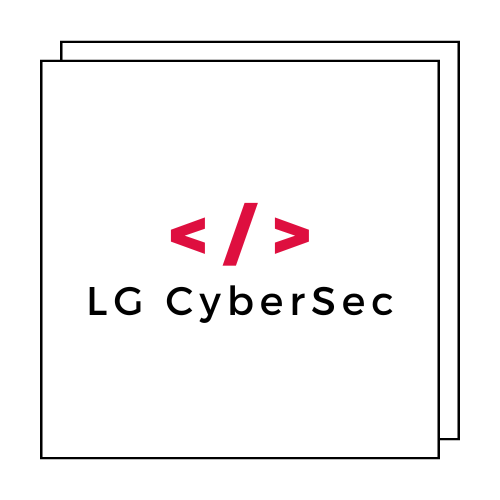The cybersecurity landscape has been rocked by the discovery of severe vulnerabilities in two of the most trusted names in secrets management: CyberArk and HashiCorp. These critical flaws, recently disclosed by security researchers, pose significant risks to enterprise infrastructure worldwide, potentially allowing attackers to gain unauthorized access to sensitive credentials, API keys, and other critical secrets that form the backbone of modern IT operations.
Organizations relying on these popular secrets management solutions now face an urgent need to assess their exposure and implement immediate remediation measures. The vulnerabilities, which affect core components of both platforms, highlight the evolving threat landscape targeting privileged access management (PAM) and secrets management infrastructure.
Understanding the Critical Nature of Secrets Management Vulnerabilities
Secrets management platforms serve as the digital vaults for enterprise organizations, storing and controlling access to sensitive information including database passwords, API keys, certificates, and service account credentials. When vulnerabilities emerge in these systems, the potential impact extends far beyond a single application or service – they can compromise entire organizational infrastructure.
The recently discovered flaws in CyberArk and HashiCorp solutions represent a particularly concerning development because these platforms are widely adopted across industries. CyberArk is a leader in privileged access management, while HashiCorp Vault has become synonymous with modern secrets management and infrastructure automation.
The Scale of Potential Impact
Organizations utilizing these platforms often manage thousands or even millions of secrets, making them high-value targets for cybercriminals. A successful exploitation of these vulnerabilities could provide attackers with access to:
- Production database credentials
- Cloud service provider API keys
- Third-party integration tokens
- Certificate authorities and signing keys
- Service-to-service authentication secrets
CyberArk Vulnerability Deep Dive: Technical Analysis and Exploitation Vectors
The CyberArk vulnerability represents a significant security flaw that could allow remote attackers to bypass authentication mechanisms and gain unauthorized access to sensitive vault data. Security researchers have identified multiple attack vectors that malicious actors could exploit to compromise CyberArk deployments.
Root Cause Analysis
The vulnerability stems from improper input validation and authentication bypass mechanisms within CyberArk’s core components. This flaw allows attackers to craft specially designed requests that can circumvent normal security controls, potentially granting them administrative privileges within the secrets management system.
The technical details reveal that the vulnerability affects the way CyberArk processes certain API calls, particularly those related to user authentication and session management. Attackers who successfully exploit this flaw could potentially:
- Extract stored credentials without proper authorization
- Modify existing secrets or inject malicious entries
- Escalate privileges within the CyberArk environment
- Establish persistent access for future attacks
Attack Methodology and Exploitation Techniques
The attack methodology involves sophisticated techniques that leverage the vulnerability to achieve remote code execution or privilege escalation. Security researchers have demonstrated that attackers with network access to CyberArk installations can exploit this vulnerability without requiring prior authentication, making it particularly dangerous for internet-facing deployments.
The exploitation process typically involves crafting malicious payloads that take advantage of the input validation weaknesses. These payloads can be delivered through various vectors, including direct API calls, web interface interactions, or through compromised applications that integrate with CyberArk services.
HashiCorp Vault Security Flaw: Compromising Modern Infrastructure Secrets
The HashiCorp Vault vulnerability presents equally concerning risks for organizations that have embraced cloud-native architectures and DevOps practices. HashiCorp Vault is extensively used in containerized environments, Kubernetes clusters, and CI/CD pipelines, making this vulnerability particularly impactful for modern development and deployment workflows.
Technical Vulnerability Details
The HashiCorp security flaw affects core Vault functionality related to secret retrieval and access control mechanisms. The vulnerability allows attackers to bypass normal authentication and authorization checks, potentially gaining access to sensitive secrets stored within Vault instances.
This particular vulnerability is especially concerning because HashiCorp Vault is often deployed in highly automated environments where service-to-service authentication relies heavily on the integrity of the secrets management system. A compromise of Vault could cascade across entire infrastructure stacks, affecting:
- Container orchestration platforms
- Microservices architectures
- Infrastructure as Code (IaC) deployments
- Continuous integration and deployment pipelines
Impact on Cloud-Native Environments
The vulnerability’s impact on cloud-native environments is particularly severe due to the interconnected nature of modern infrastructure. HashiCorp Vault often serves as the central nervous system for secret distribution in Kubernetes clusters, making a successful exploit potentially catastrophic.
Organizations using Kubernetes with integrated Vault deployments could face scenarios where attackers gain access to service account tokens, TLS certificates, and database credentials that authenticate critical workloads. This level of access could enable lateral movement across cloud environments and persistent compromise of production systems.
Real-World Attack Scenarios and Threat Modeling
Understanding how these vulnerabilities could be exploited in real-world scenarios is crucial for developing effective defense strategies. Security teams must consider various attack vectors and threat models when assessing their organization’s risk exposure.
Internal Threat Scenarios
Malicious insiders or compromised internal accounts could leverage these vulnerabilities to escalate their privileges within secrets management systems. This scenario is particularly dangerous because internal attackers often have legitimate network access and may be able to exploit vulnerabilities without triggering perimeter security controls.
The impact of internal exploitation could include:
- Unauthorized access to customer data through extracted database credentials
- Compromise of external partner integrations via stolen API keys
- Data exfiltration through access to cloud storage service accounts
- Long-term persistence through creation of rogue administrative accounts
External Attack Vectors
External attackers who gain initial network access through other means (such as phishing, software vulnerabilities, or supply chain attacks) could use these secrets management vulnerabilities as a pathway to massive privilege escalation. The centralized nature of secrets management makes these systems attractive targets for advanced persistent threat (APT) groups.
External threat actors might combine these vulnerabilities with other attack techniques, such as those documented in the MITRE ATT&CK framework, to achieve comprehensive infrastructure compromise.
Immediate Response and Mitigation Strategies
Organizations must take immediate action to address these critical vulnerabilities. The response strategy should be comprehensive and prioritize the most critical exposures while maintaining business continuity.
Emergency Patching and Updates
The first priority is to apply security patches provided by CyberArk and HashiCorp. Organizations should:
- Identify all instances of affected software versions within their environment
- Prioritize patching based on exposure risk and criticality
- Test patches in non-production environments before deployment
- Coordinate patching activities to minimize service disruption
Emergency patching procedures should be executed according to established change management processes, but with expedited approval workflows given the critical nature of these vulnerabilities.
CVE Numbers
CVE-2025-49827
CVE-2025-49831
CVE-2025-49828
CVE-2025-6000
CVE-2025-5999

